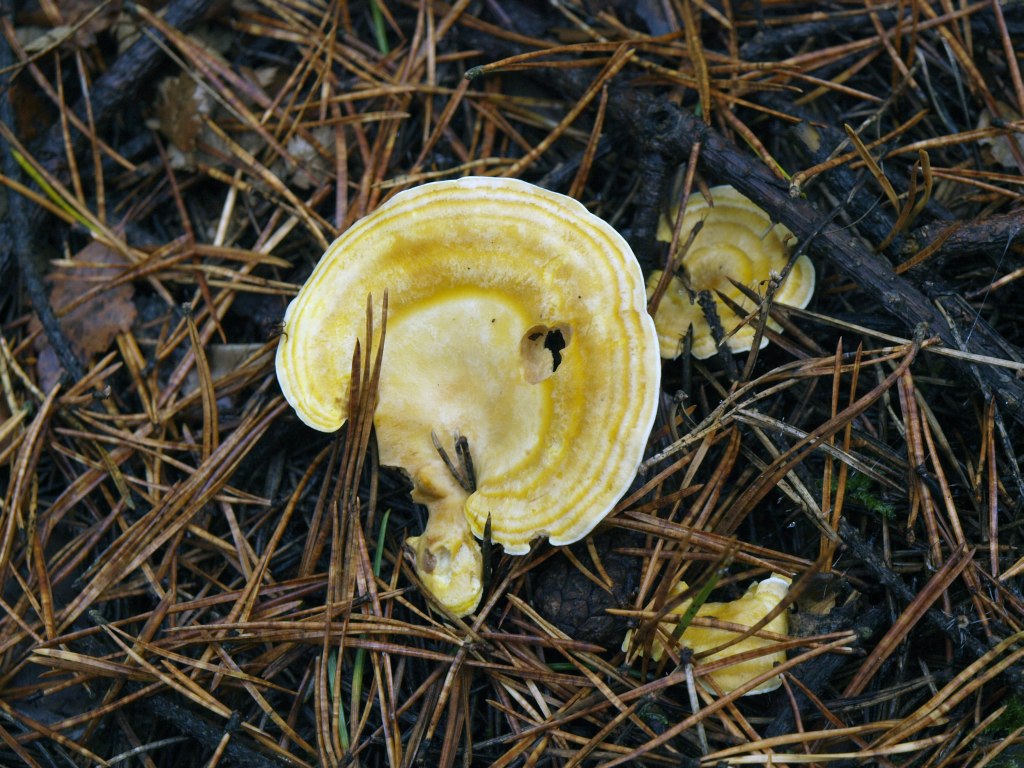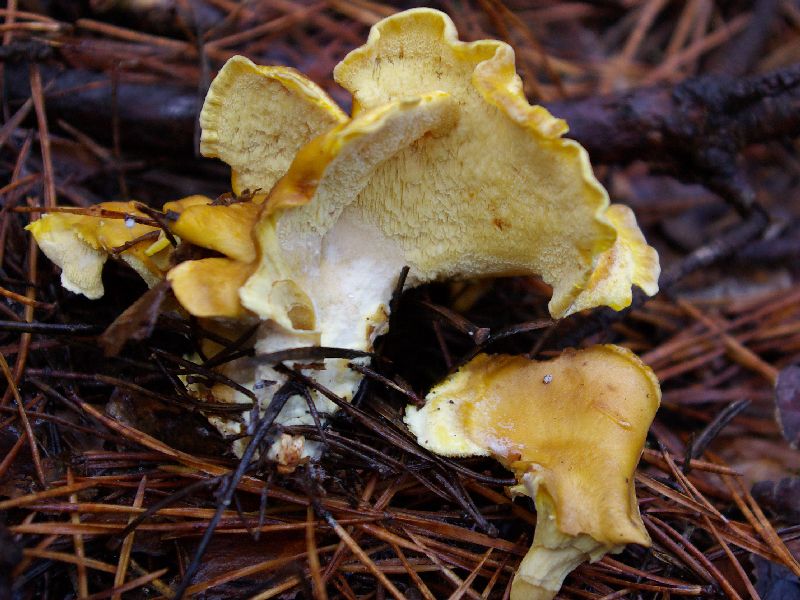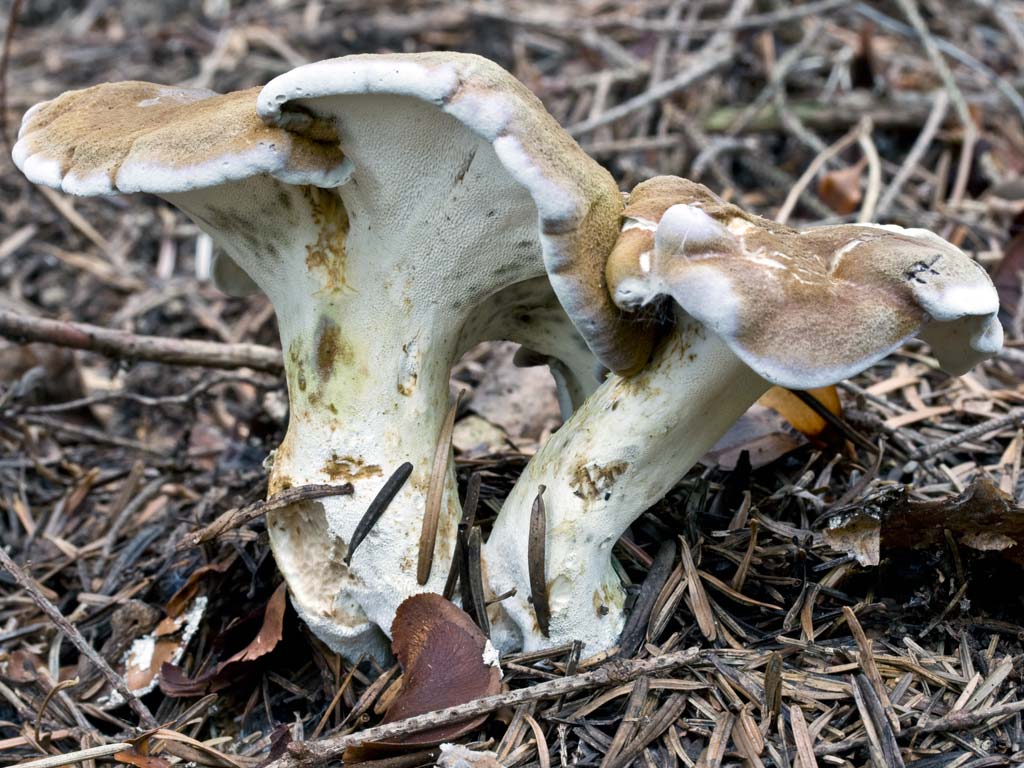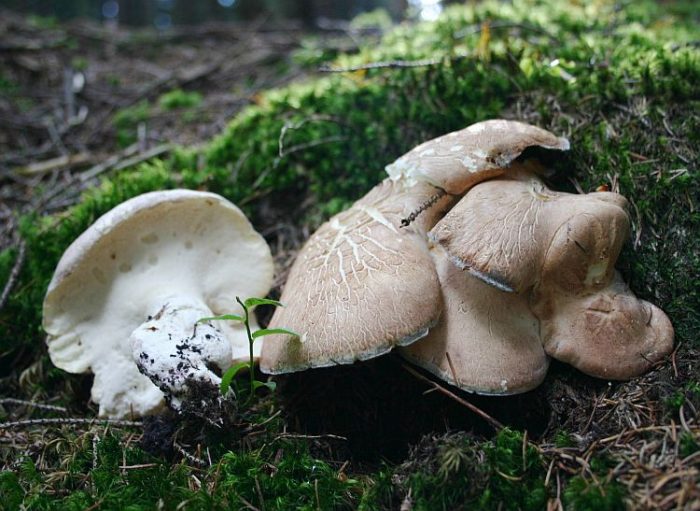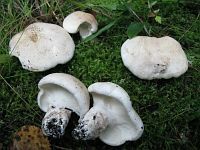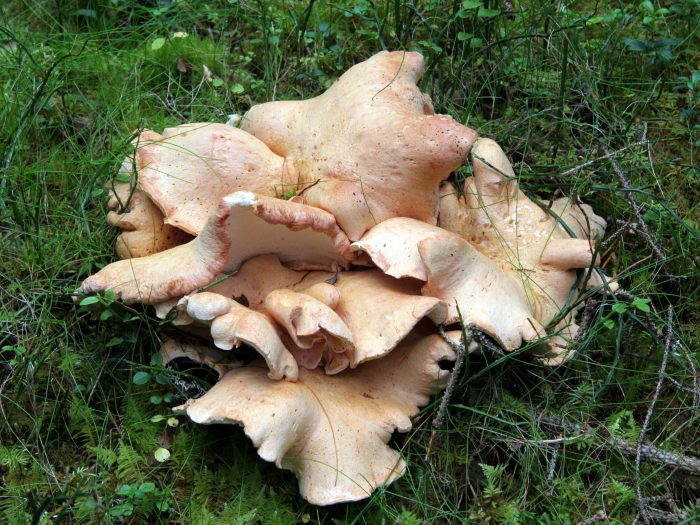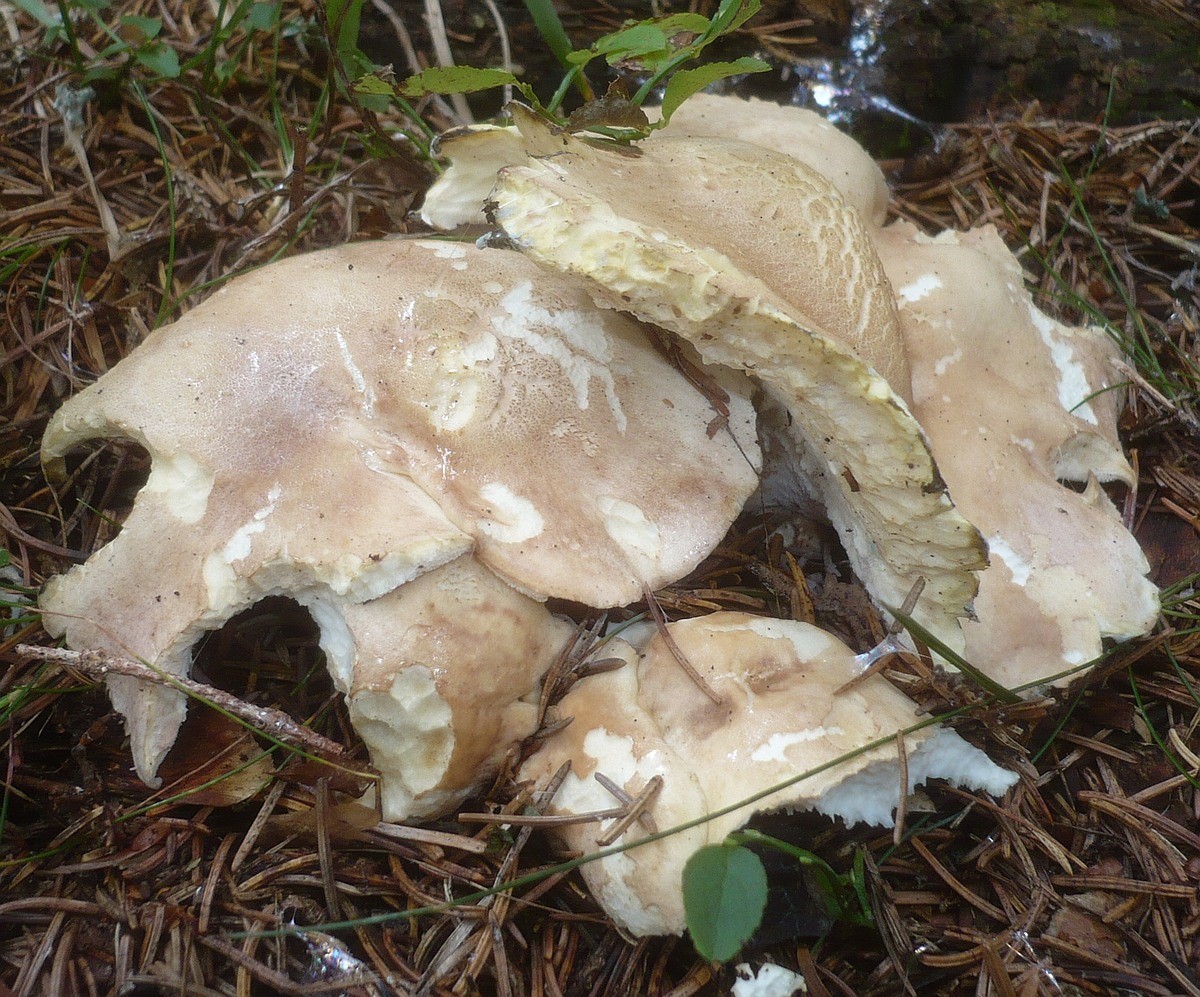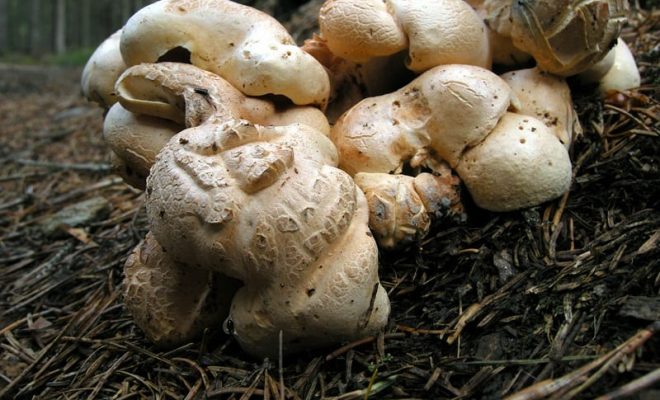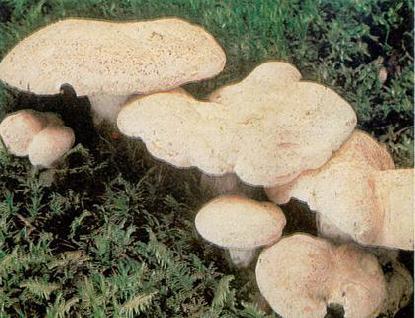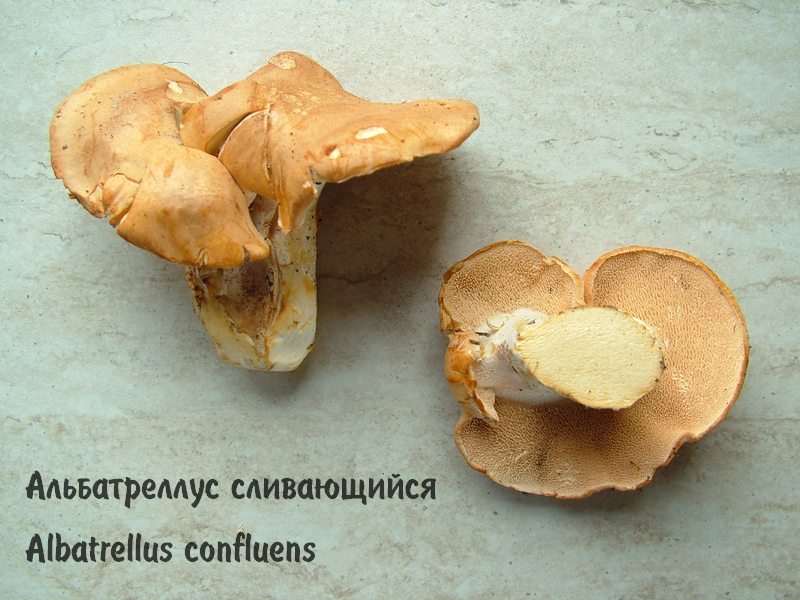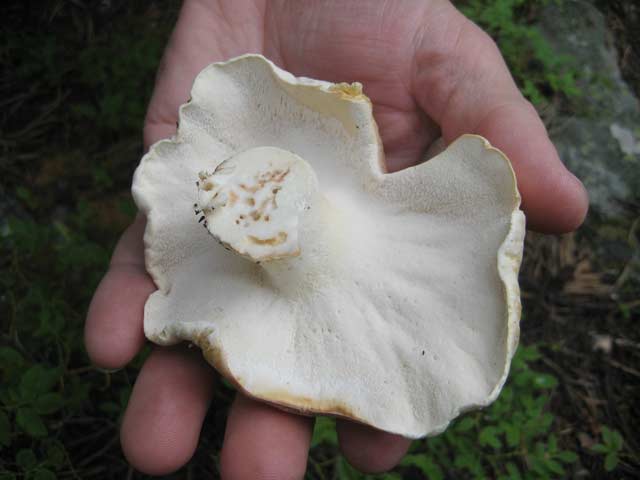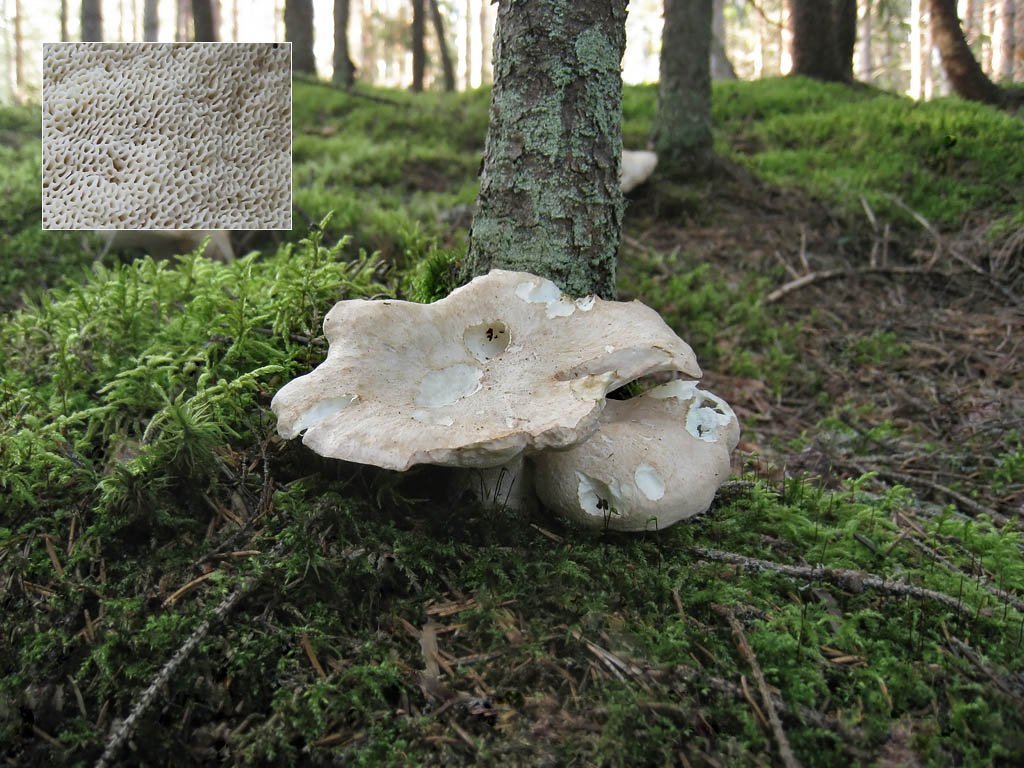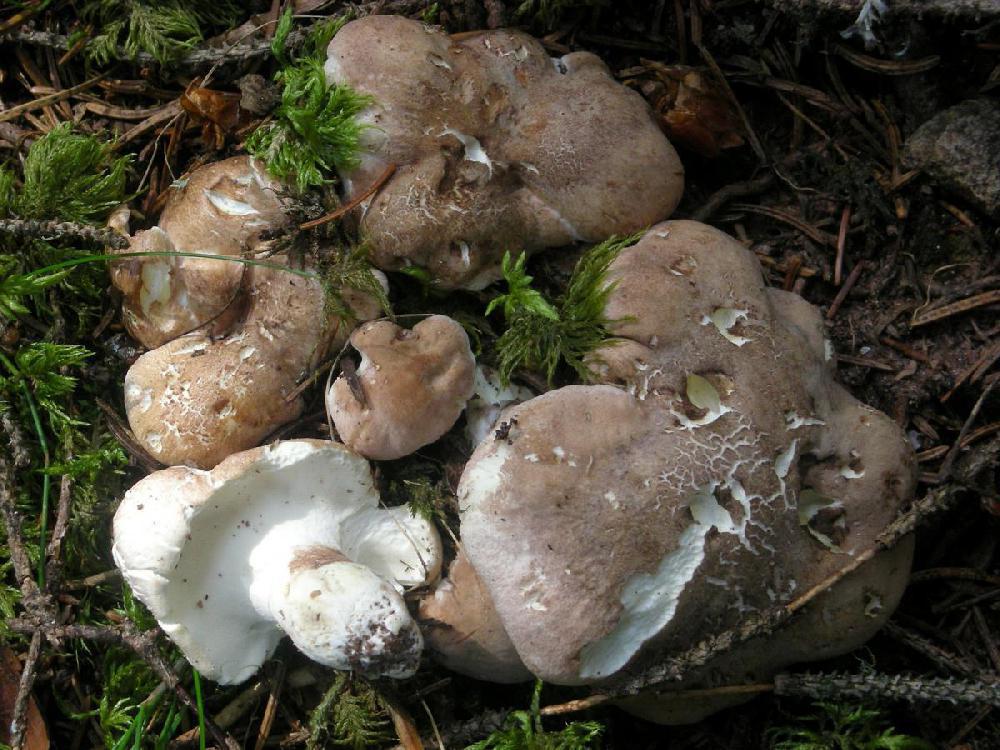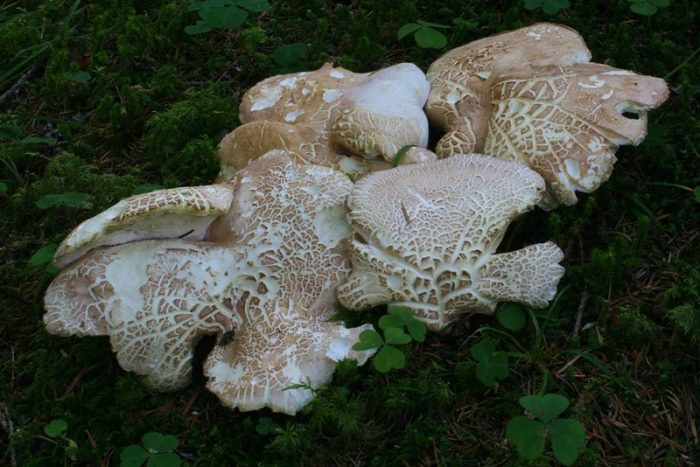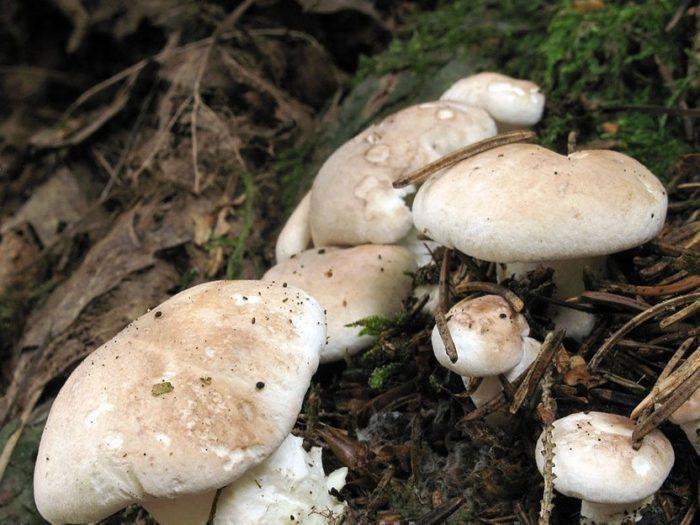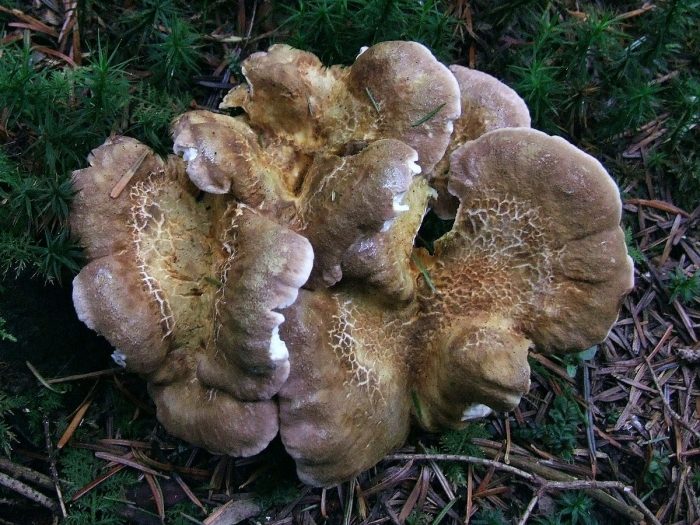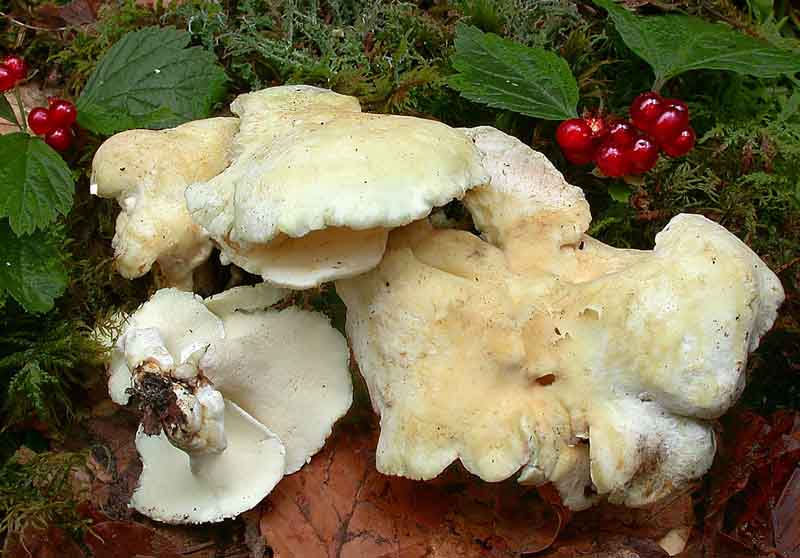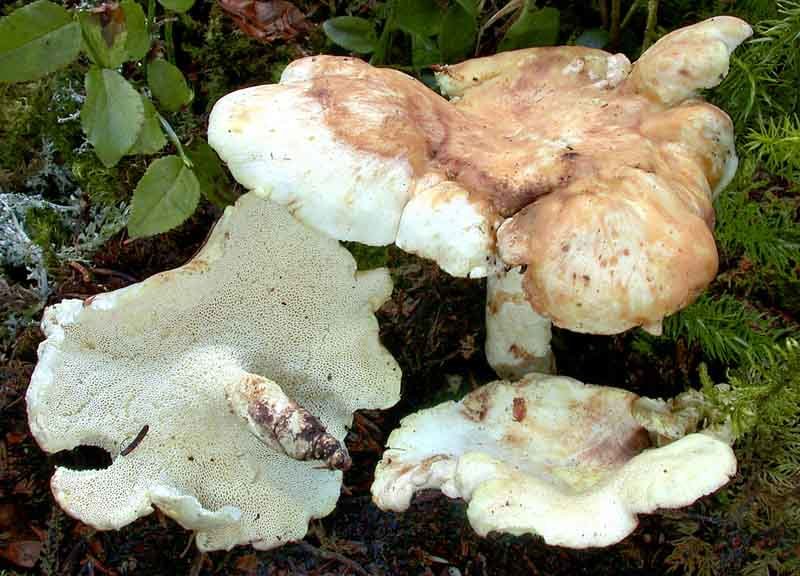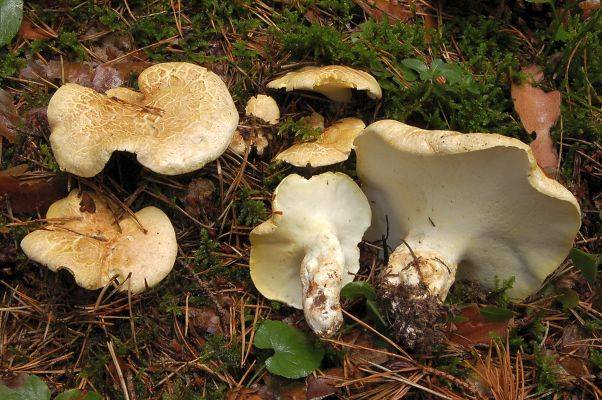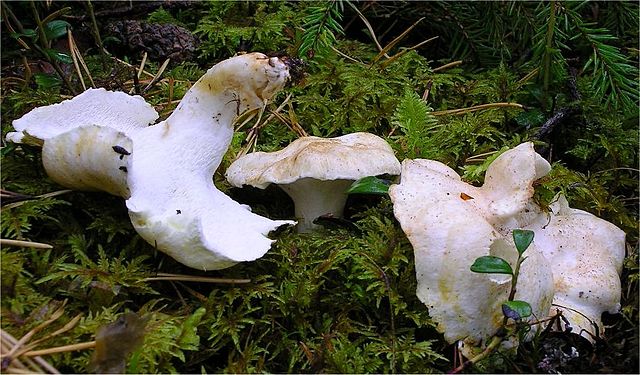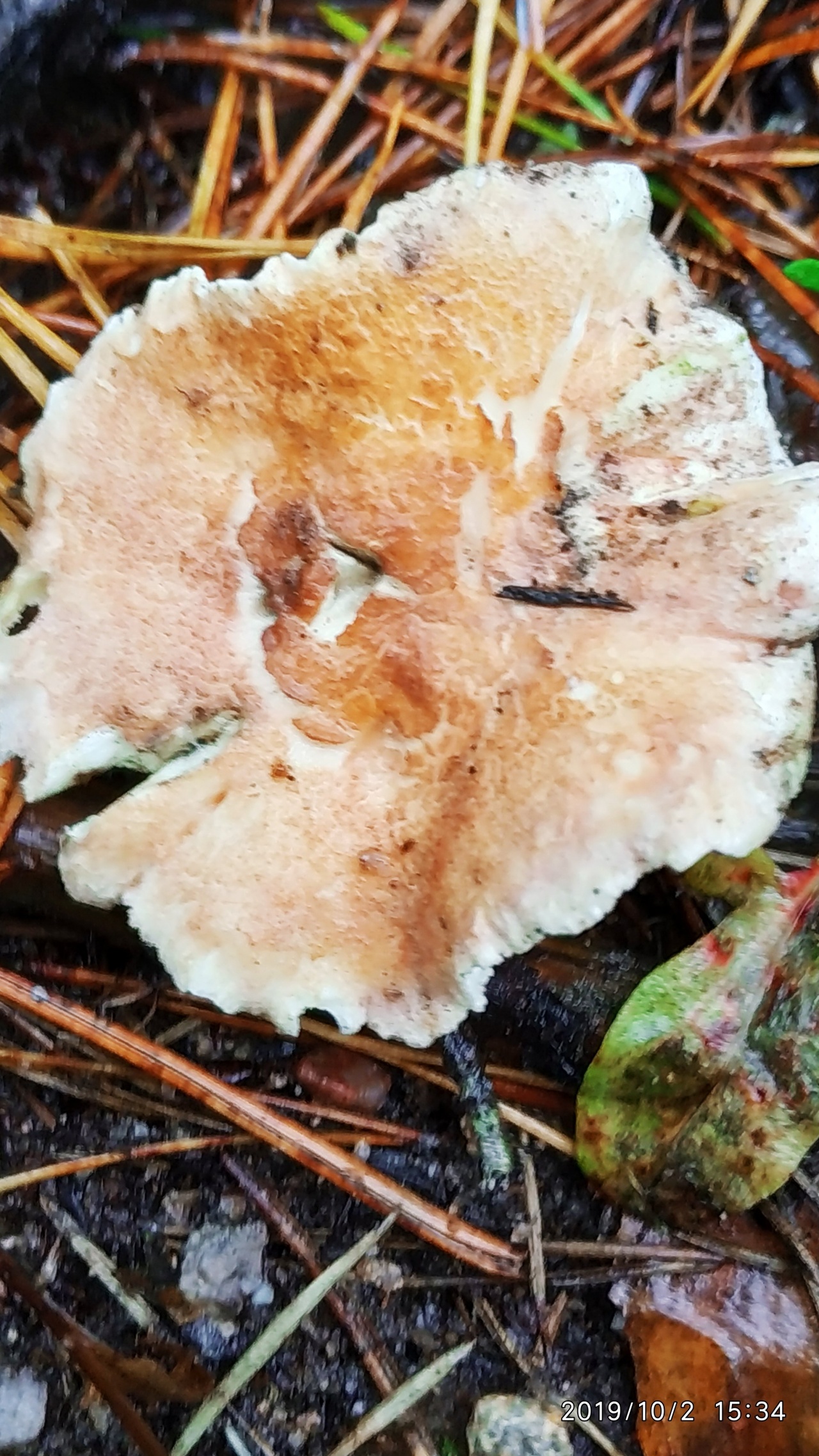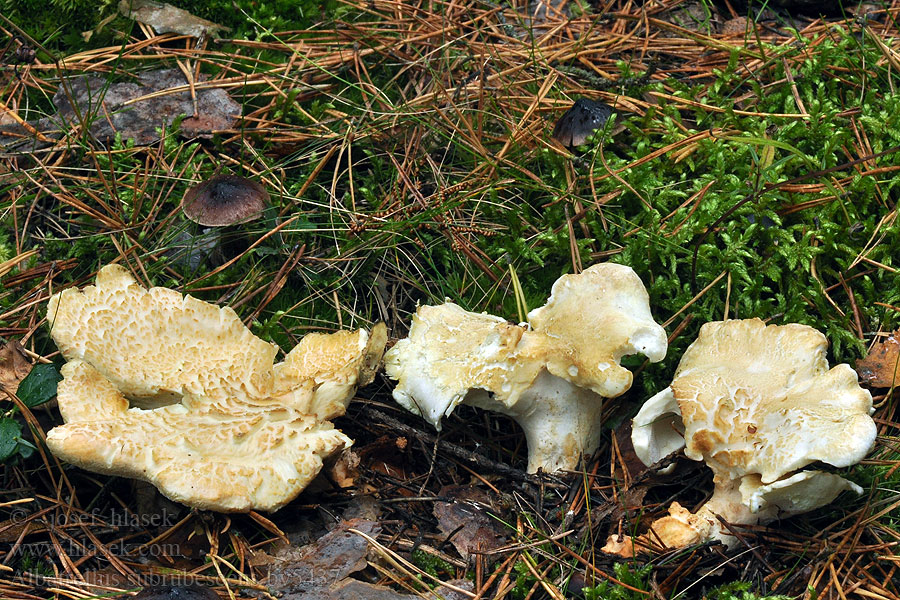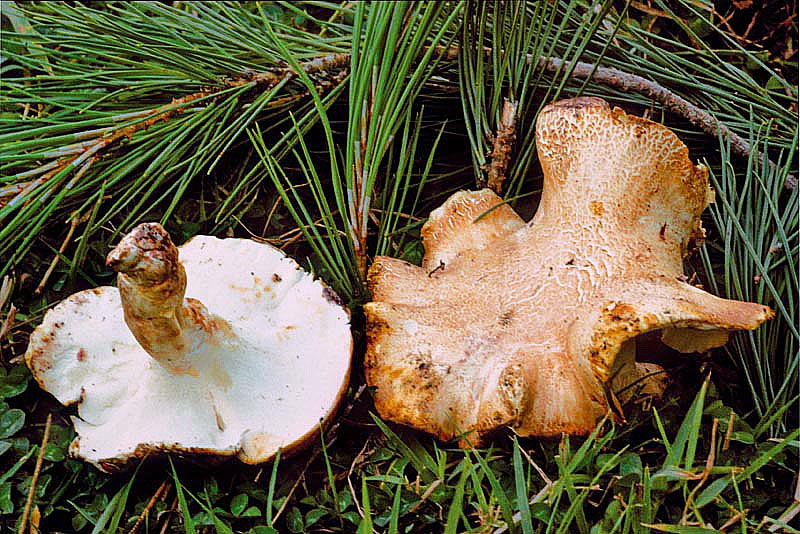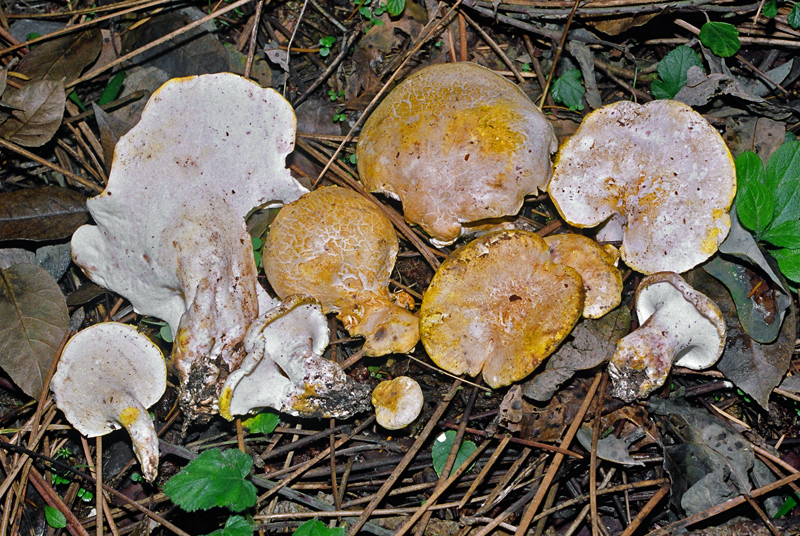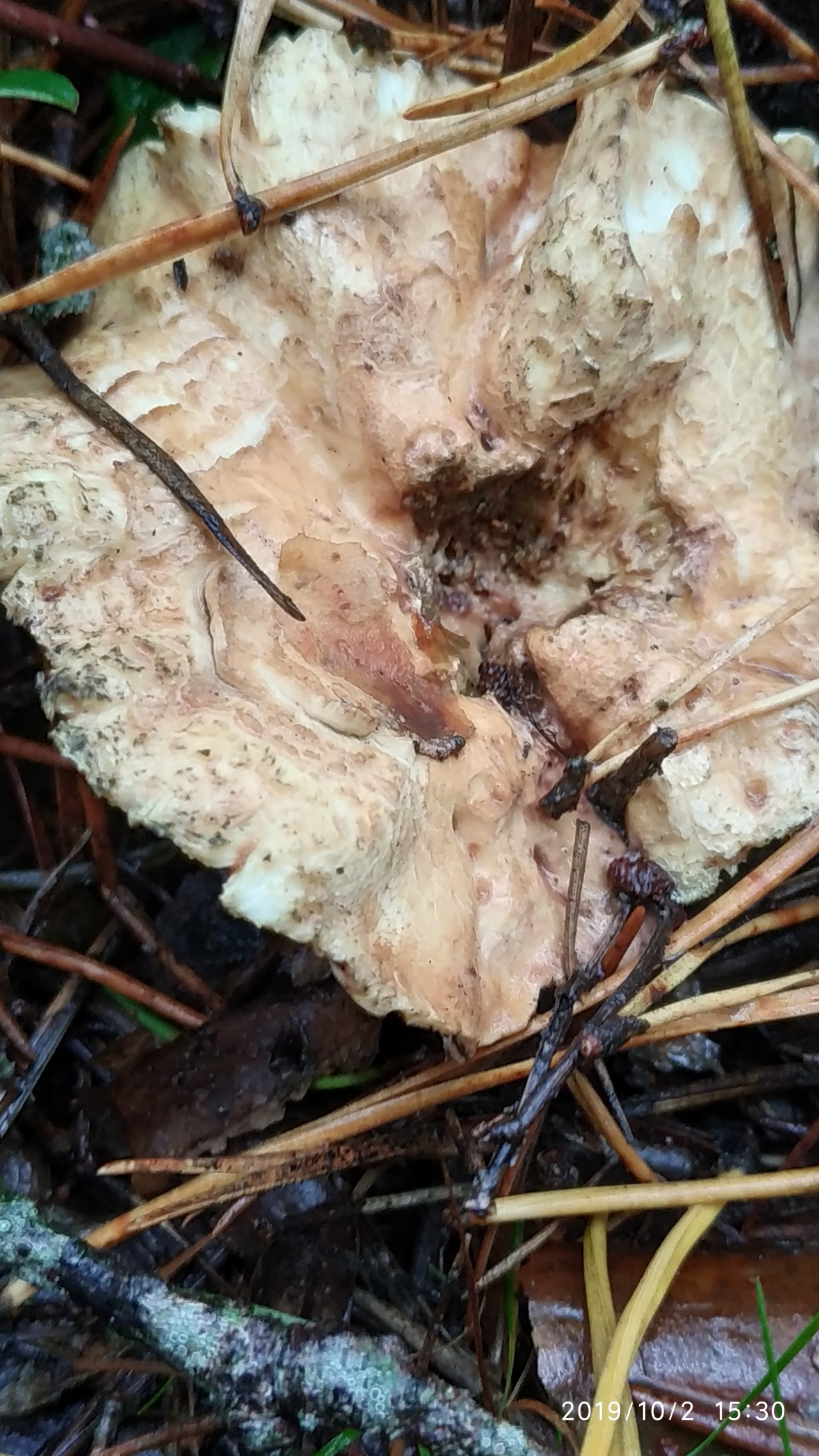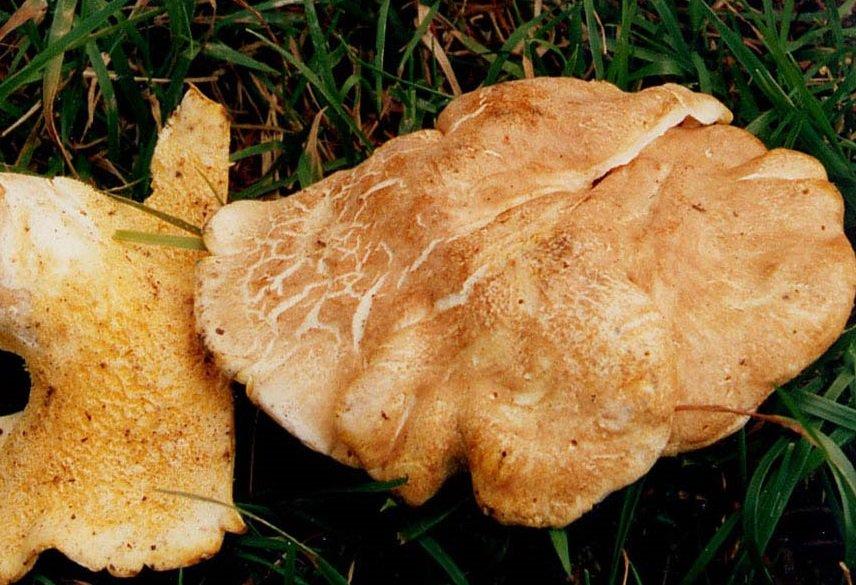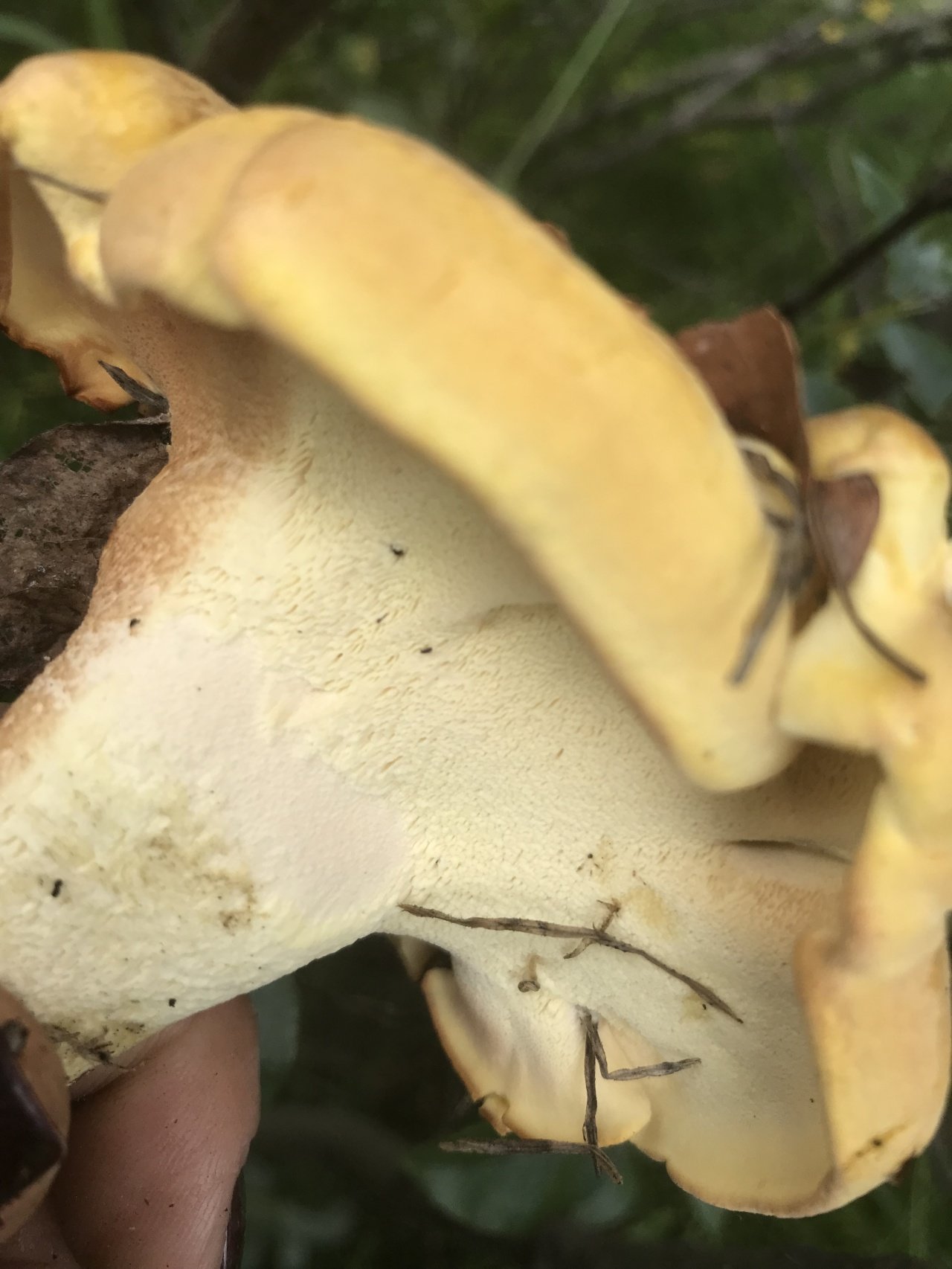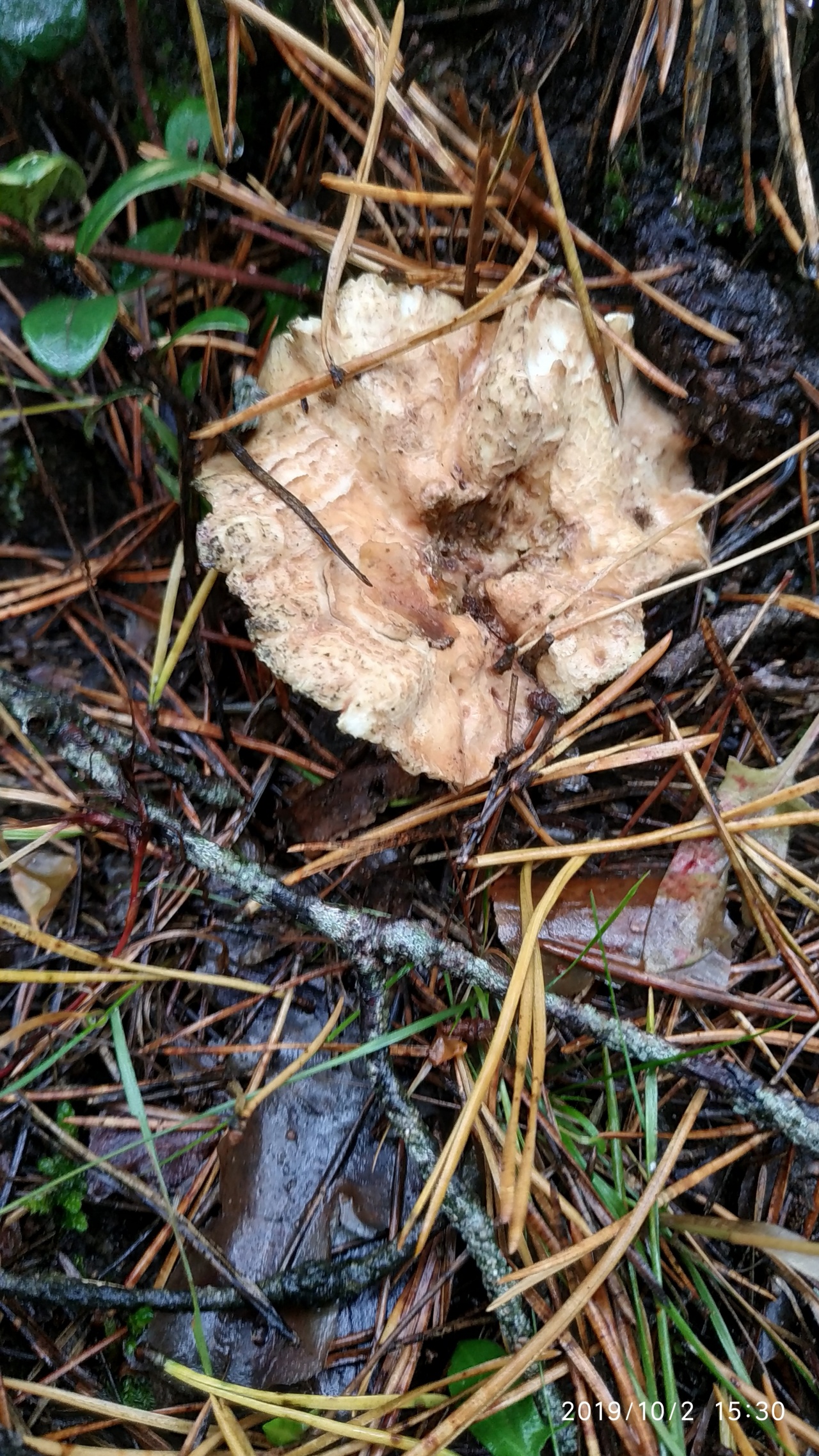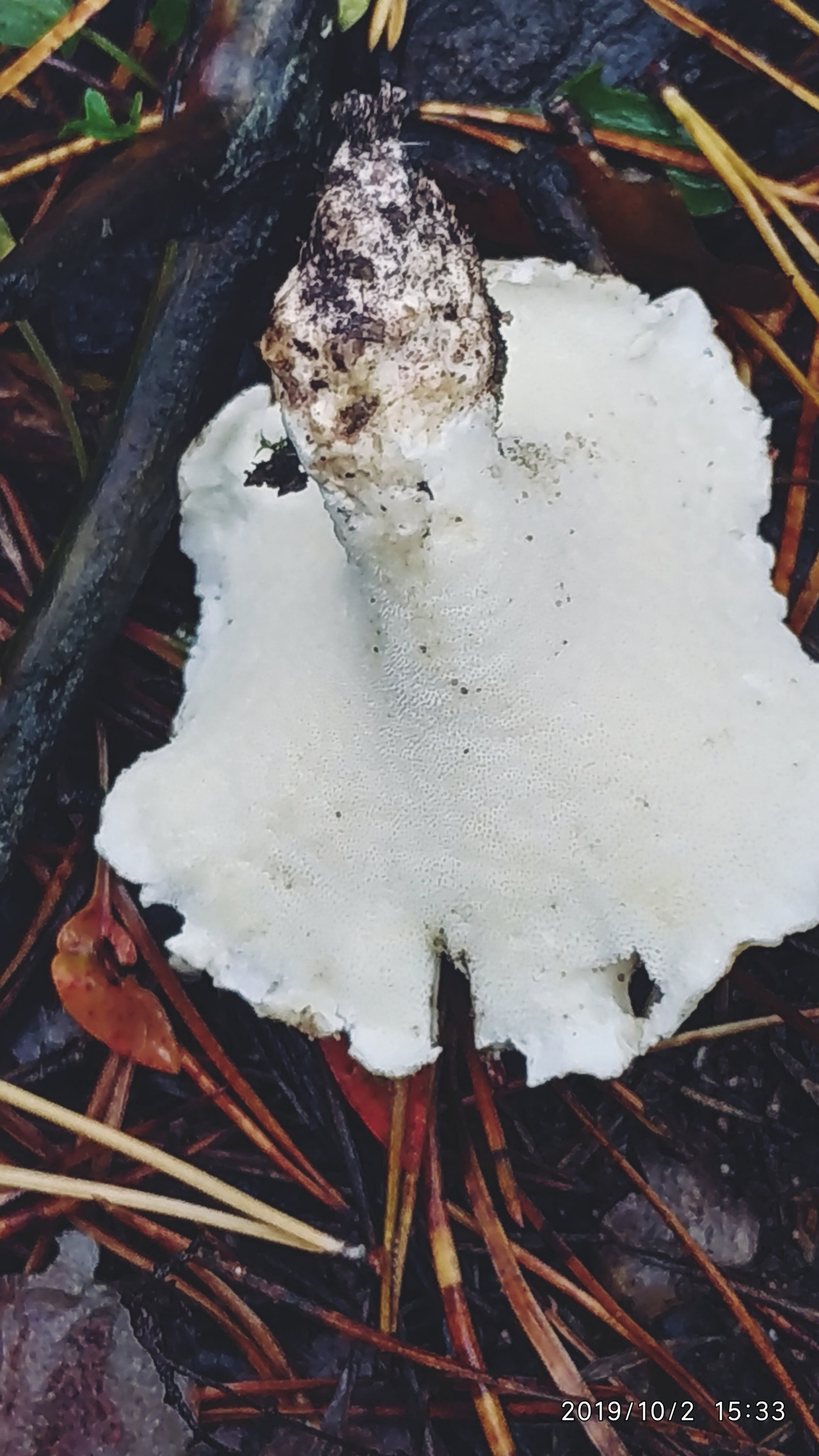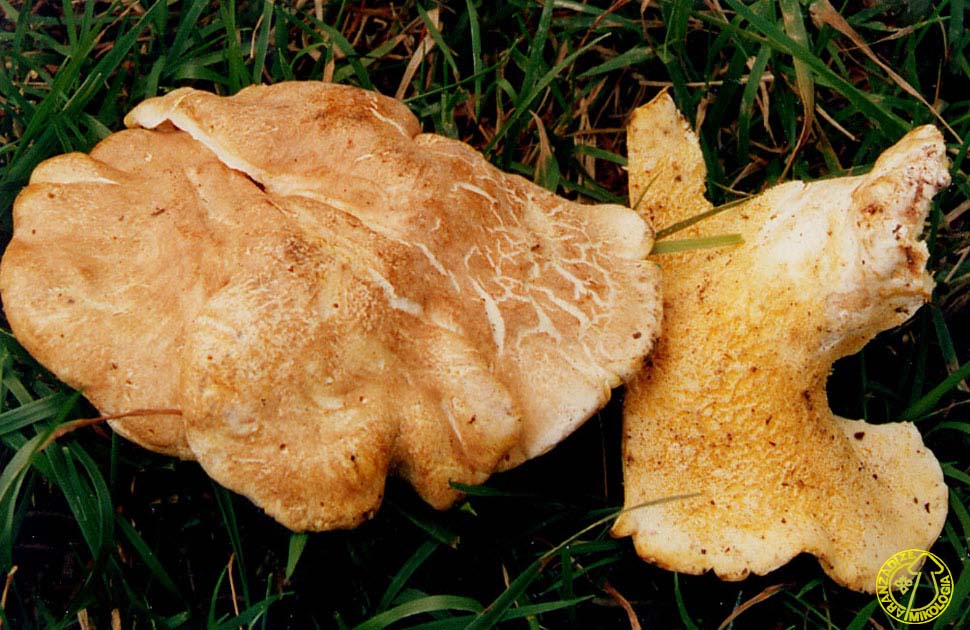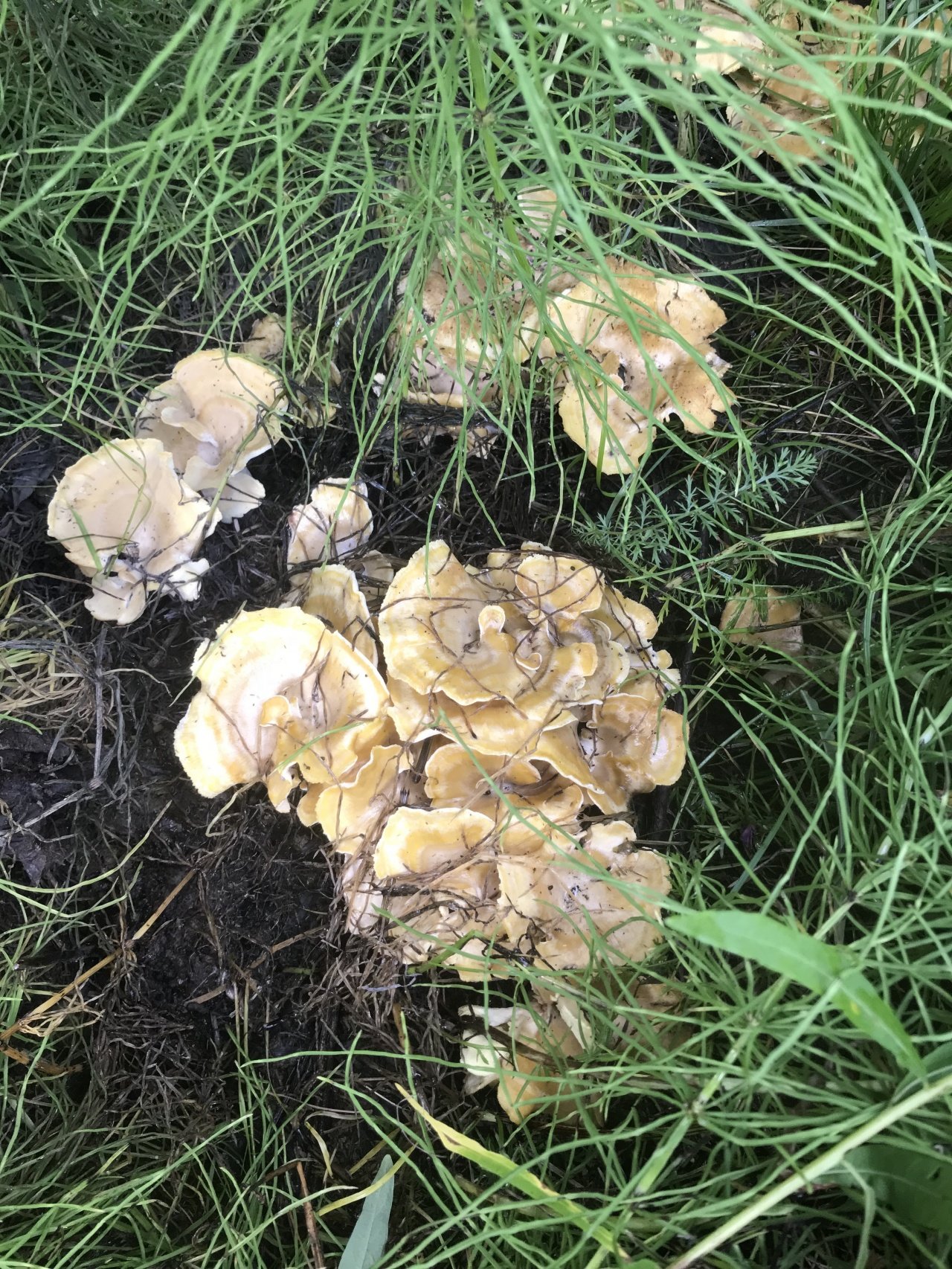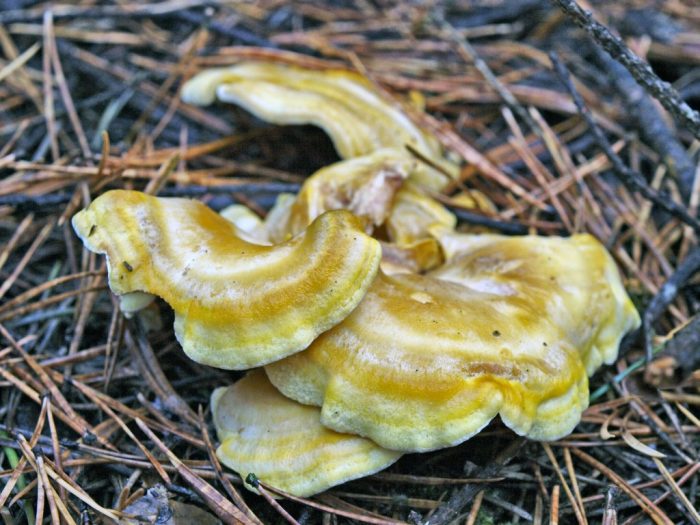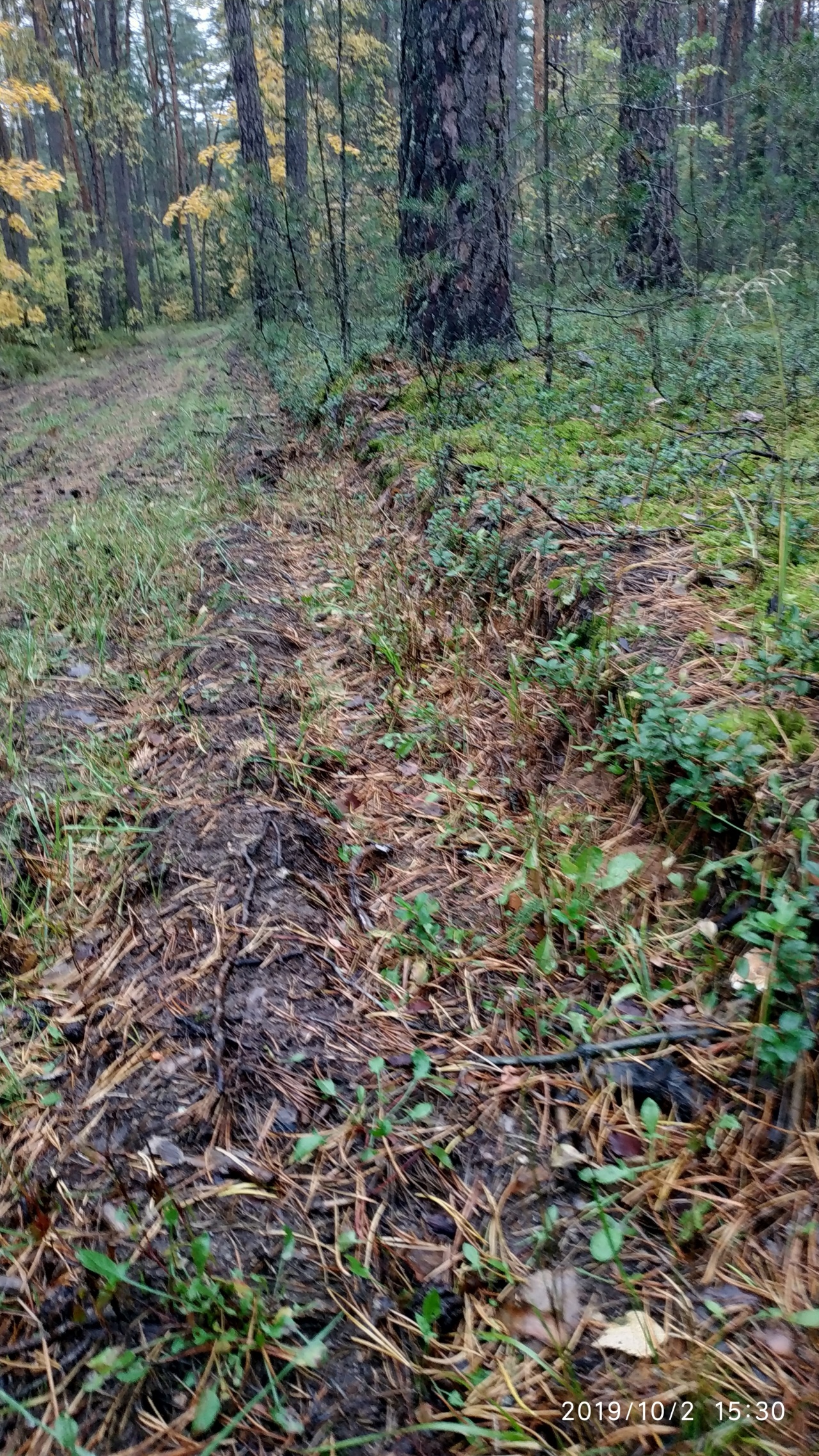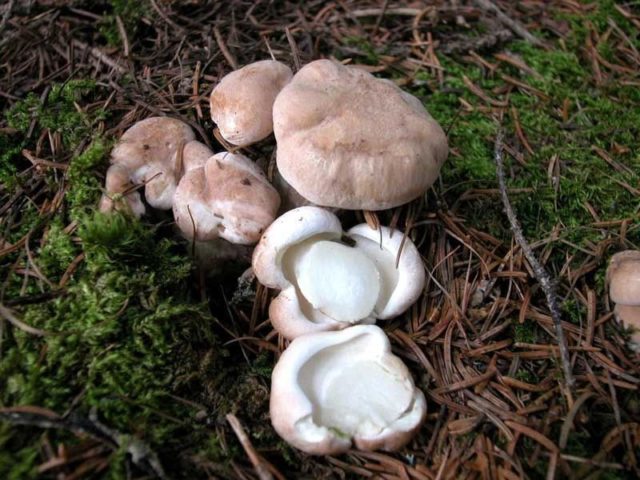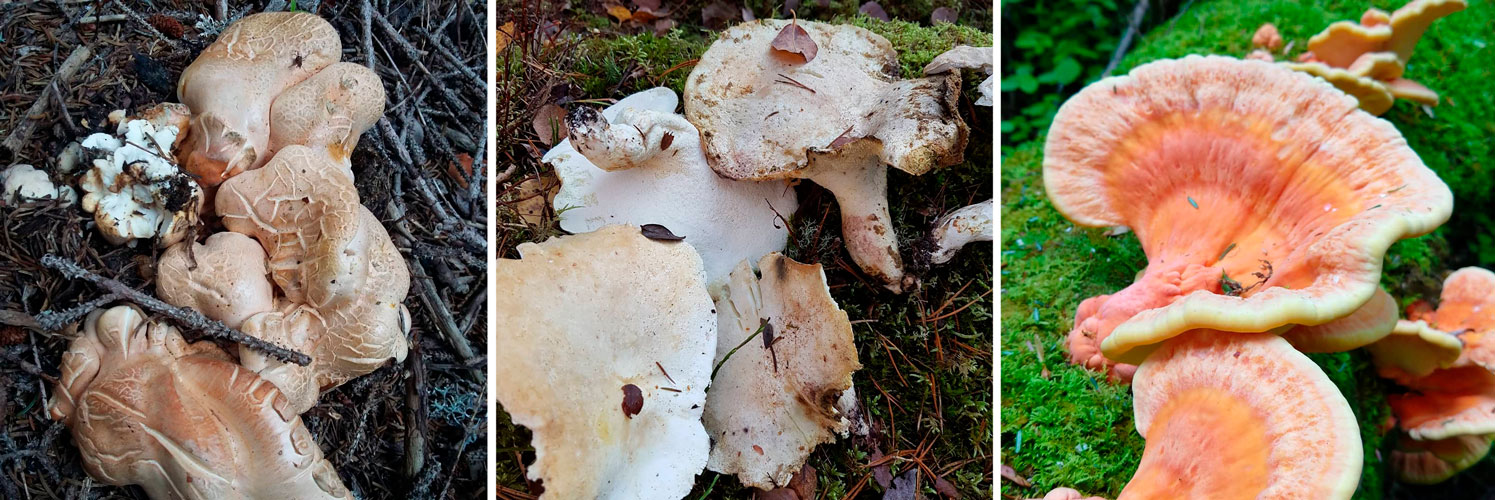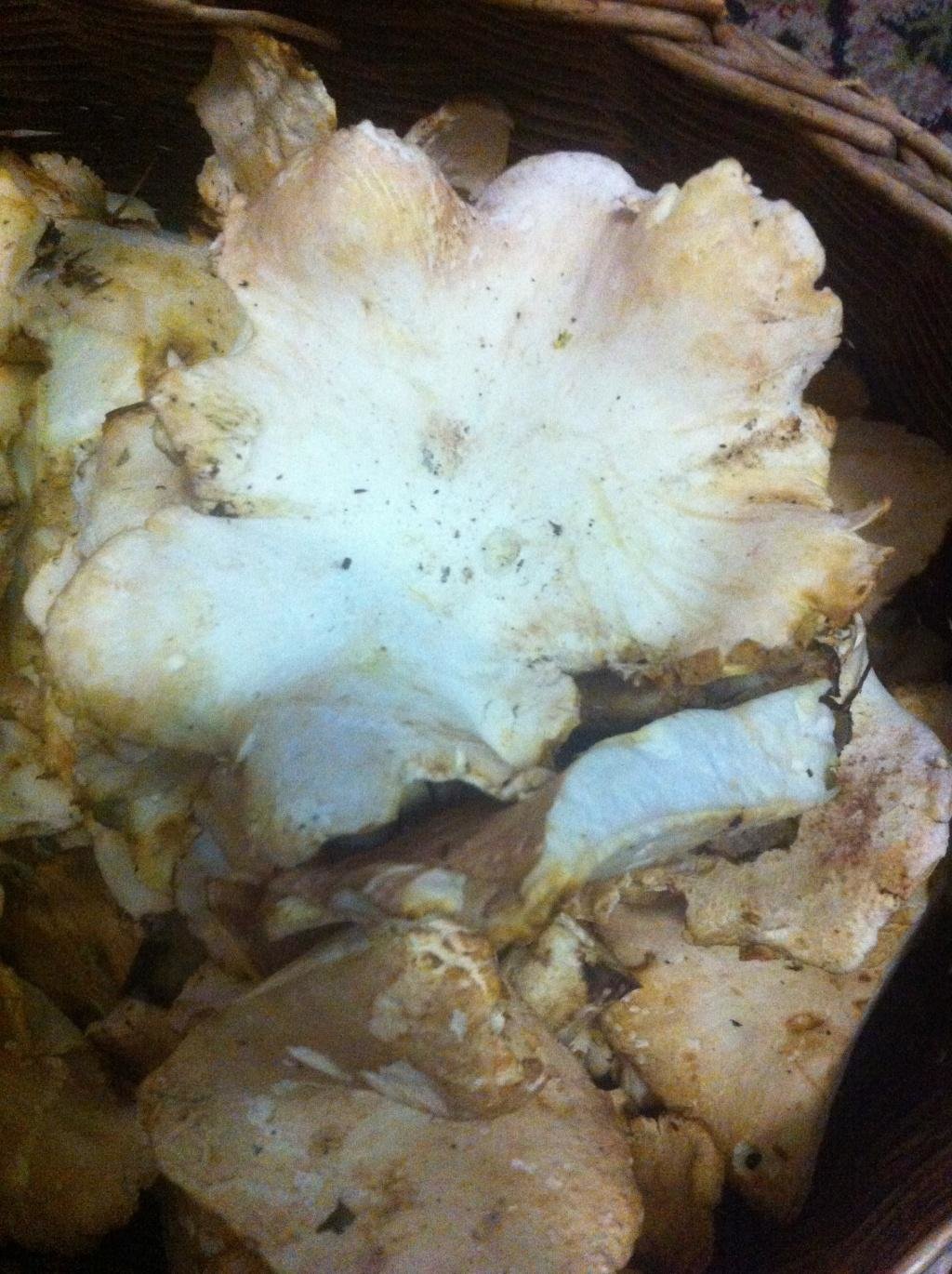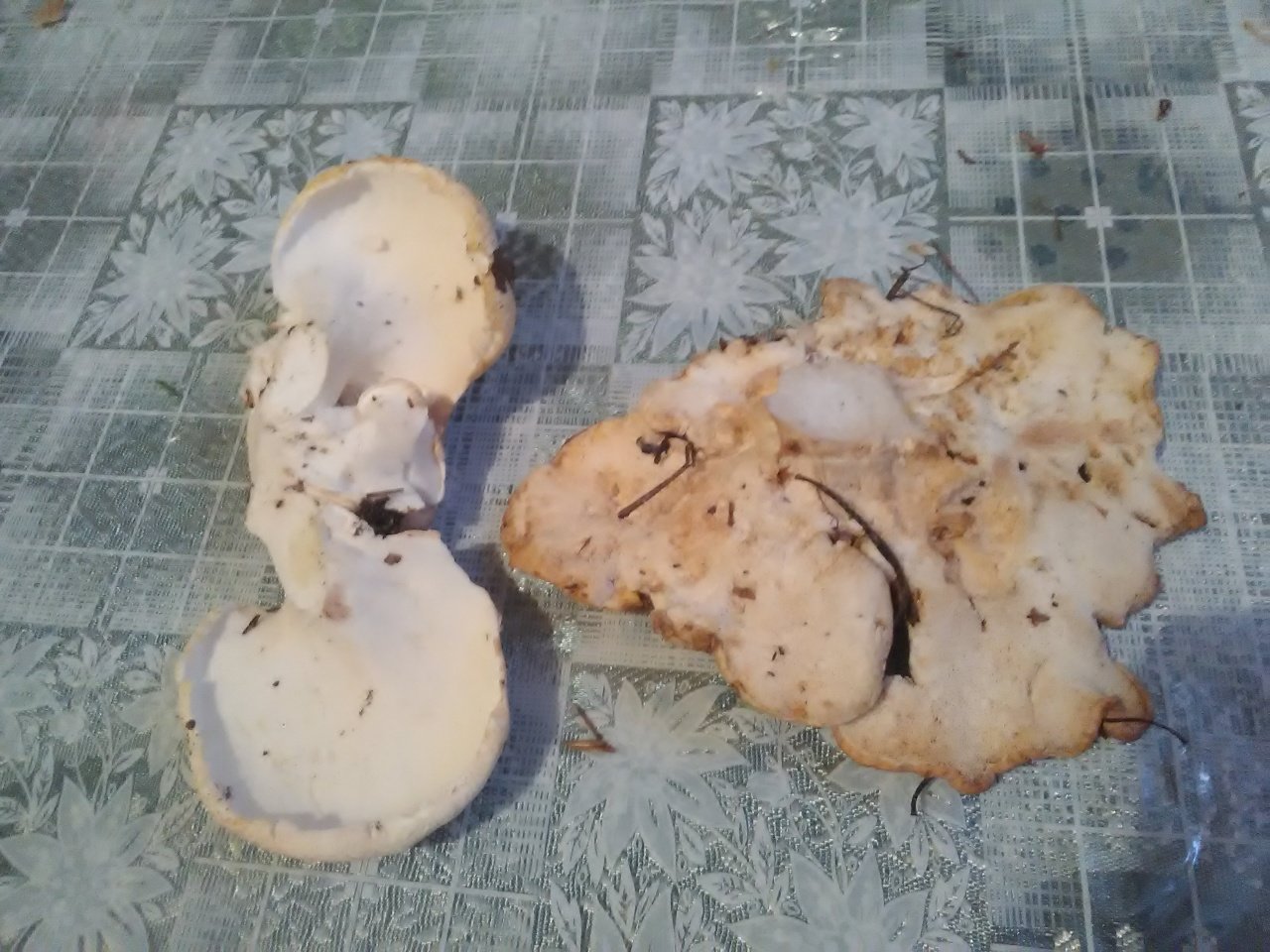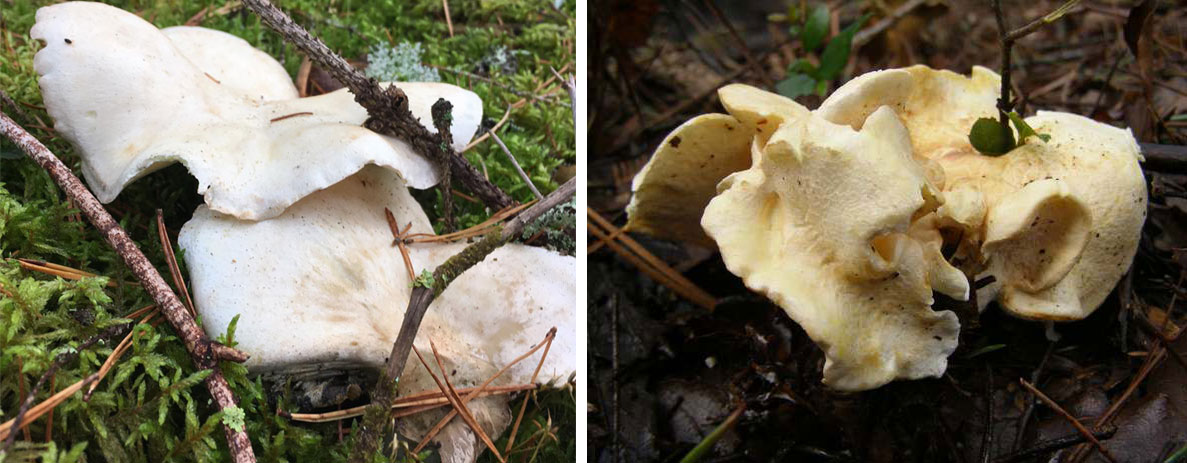The use of sheep albatrellus in cooking
Sheep tinder fungus is an edible mushroom belonging to the fourth category. It is not very popular with mushroom pickers for two reasons. Firstly, it is not widely used and rather difficult to find. Secondly, it is advisable to eat only young mushrooms. A mature plant acquires excessive rigidity, which is not removed even after prolonged heat treatment. Sheep mushroom can be consumed in any form: boiled, fried, stewed.
How to dry a mushroom
These mushrooms are great for drying. You can dry them in different ways: in the sun, in an oven, in an oven or on a gas stove. Mushrooms are dried outdoors only in sunny, dry weather, otherwise they may deteriorate. Mushrooms must be fresh, healthy, not damaged by worms. They need to be cleaned, wiped with a clean, damp cloth and sized. Mushrooms cannot be washed, they easily absorb water and do not dry well. It is best to use special tools for drying. You can make your own sieves, meshes, grids. You can string mushrooms on a thread or special hairpins. Since mushrooms dry unevenly, you need to constantly monitor the process. An overdried mushroom loses its taste, and an underdried one will quickly grow moldy and deteriorate. Ready tinder fungus is dry, light, close to fresh in taste and aroma. They should be stored in dry ventilated areas, packed in sealed metal or glass jars. It is not recommended to keep dried mushrooms in fabric bags, as they easily absorb moisture and foreign odors.
How to pickle sheep tinder
Other ways of storing sheep tinder fungus are salting and pickling. Mushrooms are salted in glass, enamel or wooden dishes. Peeled and washed mushrooms should be boiled in lightly salted water for about half an hour. Then drain the water, and discard the mushrooms in a colander. Next, put them in a container for pickling and add salt at the rate of 50-60 grams for each kilogram of mushrooms. You can add garlic, pepper, bay leaf. We put under oppression. And after a week you can have a delicious dish. Store such mushrooms in a cool room. Make sure that the brine completely covers the mushrooms.
Albatrellus soup
Albatrellus can be used to make a delicious soup. To do this, you need to take a kilogram of fresh mushrooms, sort them out, peel them, remove the legs, and wash them thoroughly. Fill the medium-sized chopped mushrooms with water and cook for about 15–20 minutes. Saute four heads of onions in vegetable oil. Add 350 grams of any cereal, fried onions, herbs, seasonings to taste to boiled mushrooms and bring to readiness.
Second courses and salads
Tinder mushrooms add special sophistication to main courses and salads. Try mushroom rolls. To do this, boil fresh mushrooms and then fry until tender. Next, grind them into minced meat, adding onion, garlic, salt, pepper. Put finely chopped boiled eggs and mayonnaise in the resulting minced meat. From the resulting mixture we form small sausages and wrap them in slices of ham. We spread the rolls on a deep dish, decorate as you wish and fill with meat jelly. The cooled dish is ready to eat.
Pickled mushrooms are also widely used in the kitchen. They can be used to make delicious salads. Here is a recipe for one of them. Chop a kilogram of salted or pickled mushrooms, add finely chopped green onions to them. Mix the mushrooms with diced boiled potatoes (300 grams) and a jar of green peas. Mayonnaise is used as a dressing for this salad; add salt and pepper to taste.
Albatrellus sheep (sheep tinder fungus, sheep mushroom)
Albatrellus lilac Albatrellus syringae
Syn: Scutiger syringae Parmasto, 1962 Xanthoporus syringae (Parmasto) Audet, 2010
Description by Andrey Yakimenko and Tatiana Svetlova.
Click on the marker to get additional information about the find of this species If you still know the place of growth of this species, please determine its coordinates and send them to the site
Basic information Additional Section-3
On off. mushroom find map
| Full scientific name of this species: Albatrellus syringae (Parmasto) Pouzar, 1966 |
This species belongs to tinder fungi, despite the fact that it lives on the soil and has fruiting bodies with a cap and a leg. The hats are yellow and usually have a few darker areas; legs narrowed towards the base, with mycelial cords. Fruiting bodies very often grow together with the legs and edges of the caps in several copies. It grows near the trunks and stumps of lilacs and some other hardwoods. Rare view. (Tatiana Svetlova)
Common names
FI: Keltakääpä (Finland) DE: Wiesen-Porling; Gezonter Porling (Germany) DK: Gul Fåreporesvamp (Denmark)
Sporecap fruiting body
Fruiting bodies are annual, consisting of a cap and a leg, single or accrete, 2-4 specimens. Caps 3 - 12 cm in diameter up to 1 cm thick, with a thinner, sharp wavy or lobed edge, rounded, kidney-shaped, funnel-shaped, sometimes convex in the center. The surface is glabrous or slightly pubescent, yellow-cream, ocher-yellow, clearly or indistinctly zoned, with darker zones, often egg-yellow along the edge, brownish in old age.
Hymenophore Hymenophore
Tubules descending along the stem, up to 3 mm long, thick-walled. The surface of the hymenophore is pale lemon, yellow-cream, later dirty yellow with a whitish bloom. The pores are rounded, angular, sometimes with ciliate margins, 3-4 (5) per 1 mm.
Micromorphology Micromorphology
The hyphalous system is monomytic. The hyphae of the tissue of the cap and legs are densely woven, hyaline, branching, sinuous, thin-walled, with a varying diameter from 3 to 15 microns, in swellings up to 25 microns in diameter, with small buckles. The hyphae of the tubules are parallel tightly woven, often with granular contents, 2-5 µm in diameter. Basidia are clavate, with a buckle at the base, 15–25 x 5–7 µm, with 4 sterigmas 2–4 µm in length. Spores are broadly ellipsoidal, flattened on one side, hyaline, with a large droplet, 3.5 - 5 x 2.5 - 3.5 µm.
Stem leg
The leg is densely fleshy, brittle, somewhat fibrous, often central, 1 - 7 cm long, 1 - 2 cm in diameter, tapering towards the base, with mycelial cords. The color is cream, ocher yellow. In old fruiting bodies, the stem may be hollow.
Flesh pulp
The tissue of the cap is fleshy, slightly fibrous, zoned, whitish or dark creamy with a pleasant nutty flavor; dry hard and brittle.
Habitat habitat
Grows on soil in parks, forests, near the trunks or stumps of lilac, willow, linden, alder.
Distribution of Areal
The species is common in Europe, Asia, North America. On the territory of Russia, it was noted in the European part (Moscow region), Western Siberia (Yamalo-Nenets Autonomous Okrug), Irkutsk region, in the Far East.
Calendar Calendar
It grows from spring to late autumn.
Edibility Edibility
Edible.
Remarks
The species is included in the Red Lists of the following European countries: Estonia (CR), Norway (LC). It is not listed in the Red Data Books of the constituent entities of the Russian Federation, as well as the Red Data Book of Russia. Note: in brackets is the status that characterizes the degree of rarity of the described species in a given country.
Taxon authors: Parmasto - Parmasto, Erast (1928-), Estonian botanist and mycologist - described this species as Scutiger syringae; Pouzar - Pouzar, Zdenek (1932-), Czech mycologist.
Growing sheep albatrellus at home
Since tinder fungus is rarely found in the forest, the question arises about growing it at home. This is possible if certain requirements are met. The mycelium of the fungus is mixed with a substrate of sawdust, shavings, small branches. The mixture is placed in polyethylene bags, cuts are made in them and placed in a room with high humidity, natural light and a temperature of +20 degrees. In a month you will get your first harvest. You can grow sheep albatrellus on stumps or wood blocks. They are soaked in water, then incisions are made on the surface, into which the mycelium is placed. The substrate is placed in a shaded place and covered with foliage.Mushrooms can be harvested in four months.
Tinder fungus is a very useful mushroom. In nature, they are orderlies of the forest, decomposing organic compounds and fertilizing the soil. A person is happy to use it for medicinal, cosmetic and culinary purposes.
Albatrellus ovinus (Albatrellus ovinus)
Other names:
- Scutiger ovinus
Albatrellus ovine, ovine mushroom (Albatrellus ovinus) grows in dry pine and spruce forests. Belongs to the well-known mushroom family Tinder fungus.
Description:
The round mushroom cap reaches ten centimeters in diameter. In an old mushroom, it cracks. The skin of the cap of the young mushroom is dry and silky to the touch. The lower surface of the mushroom cap is covered with a fairly dense layer of white-colored tubes, which are easily separated from the mushroom pulp. The surface of the cap is dry, naked, at first smooth, silky in appearance, then slightly scaly, cracking in old age (especially during dry periods). The edge of the cap is thin, sharp, sometimes pubescent, from slightly wavy to lobed.
The tubular layer strongly descends on the leg, the color varies from white or cream to yellow-lemon, greenish-yellow, turns yellow when pressed. The tubules are very short, 1–2 mm long, the pores are angular or rounded, 2–5 per 1 mm.
The stem is short, 3 - 7 cm long, thick (1 - 3 cm thick), strong, smooth, solid, central or eccentric, narrowed towards the base, sometimes slightly bent, from white (cream) to gray or light brown.
Spore powder is white. The spores are almost round or ovoid, transparent, smooth, amyloid, often with large drops of fat inside, 4 - 5 x 3 - 4 microns.
The pulp is dense, damp, brittle, white, yellow or yellowish-lemon when dry, often turns yellowish when pressed. The taste is pleasant, soft or slightly bitter (especially in old mushrooms). The smell is rather unpleasant, soapy, but according to some literary data, it can be both inexpressive and pleasant, almond or slightly mealy. A drop of FeSO4 stains the flesh gray, KOH stains the flesh a dirty golden yellow color.
Spreading:
Albatrellus ovine occurs infrequently from July to October on the soil under spruces in dry coniferous and mixed forests in clearings, clearings, forest edges, along roads, and also in the mountains. Prefers neutral and alkaline soils, often grows in moss. Forms clusters and groups with closely adhered to each other, sometimes growing together, legs and edges of caps, fruit bodies. Single specimens are less common. The species is widespread in the northern temperate zone: it is recorded in Europe, Asia, North America, and also found in Australia. On the territory of Russia: in the European part, Siberia and the Far East. Moss cover is considered a favorite place for growth. Tinder fungus is a rather large mushroom. It grows singly or in groups, sometimes growing together with its legs.
Similarity:
Ovine albatrellus in its appearance is similar to the confluent tinder fungus, which has a more brown color. Yellow blackberry (Hydnum repandum) is distinguished by a hymenophore, consisting of thick light creamy spines slightly descending on the leg. Albatrellus confluens is colored orange or yellow. brown tones, with a bitter or sour taste. It has accrete, usually uncracking caps, grows under various conifers. Albatrellus subrubescens is colored orange, light ocher or light brown, sometimes with a purple tint. The tubular layer is light orange. Grows under pine and spruce trees, has a bitter taste. Albatrellus cristatus has a brown-green or olive cap, grows in deciduous forests, most often in beech groves. Lilac albatrellus (Albatrellus syringae) is found in mixed forests, colored in golden yellow or yellowish brown tones.The hymenophore does not descend on the leg, the pulp is light yellow.
Grade:
Albatrellus ovine is a little-known edible mushroom of the fourth category. The mushroom is suitable for consumption only in an unripe form. Young caps of this mushroom are used fried and boiled, as well as stewed. Before use, the mushroom must be boiled with the preliminary removal of the lower part of its leg. In the process of boiling, the mushroom pulp acquires a yellowish-green color. The mushroom is considered especially tasty when fried raw without preliminary boiling and heat treatment. Ovine albatrellus can be pickled with spices for long-term storage.
The species is listed in the Red Book of the Moscow Region (category 3, a rare species).
Used in medicine: scutigeral, isolated from the fruiting bodies of ovine tinder fungus, has an affinity for dopamine D1 receptors in the brain and may act as an oral pain reliever.
Edible albatrellus sheep
Ovine albatrellus is an edible mushroom that is used fresh, dried, pickled, boiled, fried, stewed. It is a tasty mushroom, but its tough flesh is difficult to digest and can cause gastrointestinal upset.
They eat the caps of young mushrooms, which are boiled before use. When boiled, the flesh of the mushroom turns yellowish-green. Another cooking method is to fry raw albatrellus without boiling. Also, the mushroom is pickled with spices, which allows it to be stored for a long time.
Albatrellus is dried in the sun, in an oven, in an oven or on a gas stove. Drying outdoors requires sunny, dry weather to keep the mushrooms from spoiling. Fresh healthy mushrooms are cleaned, wiped with a damp cloth and sized. It is not necessary to wash the mushrooms, as they absorb moisture well and then dry out poorly. Then they are strung on a thread or hairpins. Albatrellus dries unevenly, so you need to monitor the process. An overdried mushroom will lose its taste, and an underdried mushroom will quickly deteriorate. When finished, dried albatrellus becomes light and dry, and tastes and smells like a fresh mushroom. Dried mushrooms are stored in dry, well-ventilated rooms, in sealed metal or glass jars.
Another way to store sheep's albatrellus is salting and pickling. Mushrooms are salted in a bowl made of wood, glass or enamel. Peeled and washed mushrooms are boiled in salted water for half an hour. The water is drained, the mushrooms are thrown into a colander and put in a container for salting. Salt is added at the rate of 50-60 g per 1 kg of mushrooms. Garlic, pepper, bay leaf are also added. Then they put him under oppression. A delicious dish is ready in a week. Salted albatrellus is stored in cool rooms. The brine should completely cover the mushrooms.
A delicious soup is made from albatrellus. 1 kg of fresh mushrooms is sorted out, peeled, legs removed and washed. Mushrooms are cut small, filled with water and boiled for 15–20 minutes. 4 onions are sautéed in vegetable oil. Add 350 g of any cereal, fried onion, chopped greens, seasonings to boiled mushrooms and bring to readiness.
Albatrellus is also used for preparing main courses and salads. For example, rolls made from these mushrooms are popular. Fresh mushrooms are boiled and fried, after which they are ground into minced meat with onions, garlic, salt and pepper. Chopped boiled eggs and mayonnaise are added to the finished minced meat. Sausages are formed from the mixture, which are wrapped in slices of ham. Rolls are laid out on a dish and poured with meat jelly, cooled.
Salads are prepared from pickled albatrellus: 1 kg of pickled mushrooms is cut and finely chopped green onions are added. Diced boiled potatoes (300 g) and a jar of green peas are added to the mixture. Dress the salad with mayonnaise, seasonings - salt and pepper.
Albatrellus sheep
Albatrellus sheep (from lat.Albatrellus ovinus) is a mushroom of the genus Albatrellus, of the Albatrell family. This mushroom is also called sheep tinder fungus, or sheep mushroom. In terms of nutritional value, it occupies the fourth category, the main disadvantage is tough pulp, which is difficult to digest. In principle, it is most interesting because it grows in late autumn, when most of the other mushrooms are gone. It is better to boil it before using it, you can also pickle or pickle mushrooms. It tastes quite pleasant, soft, although if the mushroom is old, it can be slightly bitter in taste. As a rule, exclusively young mushrooms are used for food. Its smell is not the most pleasant in most cases, comparable to the smell of soap, although sometimes there are exceptions to the rule, and then the mushrooms have a pleasant almond aroma, not too pronounced. In addition to being consumed in food, it is also used in medicine as a pain reliever: the scoutigeral it contains is similar to some receptors in the brain.
External signs
Outwardly, it is distinguished by a hat up to two cm thick, reaching from five to eighteen cm in diameter, fleshy, one or two centimeters thick. Its color can range from white to gray-brown, has a convex, sometimes more flattened shape. It is round in shape, sometimes it is not quite correct in shape. The hat, depending on the age, is either smooth or cracked. The latter is more relevant for periods of drought. The leg is from three to seven cm long, from one to three cm thick, slightly tapering towards the base. The color of the leg is either white, light brown, or gray. There is also a tubular layer on the stem, usually white or yellowish. Spore white powder. There are also several species of albatrellus similar to it: comb, accrete, blushing, and also albatrellus lilac. Also, albatrellus ovine has some resemblance to the yellow hedgehog. The difference between the latter is in the cream-colored hymenophore (the part of the fungus, on the surface of which there is a spore-bearing layer - hymenium).
Habitat
It grows most often in spruce or mixed forests, from July to October. It is found both in the mountains and on flat terrain, in particular in glades, glades and forest edges. The distribution zone is mainly northern temperate, it can grow in the northern and middle taiga, in Russia it is mainly found in Siberia, in the European part and in the Far East.
How to cook?
There are many ways to prepare albatrellus ovinus for human consumption. Dried tinder fungi are especially appreciated, since in this form they retain their taste as much as possible. In addition, they are pickled, used for making soups and main courses, and salads are made.
How to dry a mushroom?
Polypores can be harvested for the winter by drying. To do this, fresh mushrooms are cleaned, wiped with a towel and strung on a thread. If weather permits, you can dry outdoors, but you need to constantly monitor this process. Tinder fungus quickly absorbs moisture, so any light rain or fog will backfire. A tinder fungus that has collected water will quickly grow moldy and deteriorate.
If the weather is humid, you can dry the mushrooms in an oven or oven. Do not overdry: a specimen that is too dry will lose its taste. If the sheep tinder fungus is dried correctly, it will smell and taste like a fresh mushroom. The finished product should be stored in sealed glass containers, where moisture does not get.
How to pickle?
A good way to preserve tinder fungus is to pickle it. This will require a glass or enamel container. You can use a wooden tub. Mushrooms need to be sorted out, peeled and boiled in salted water for 30 minutes. Then transfer to a prepared container and add 50 g of salt per 1 kg of mushrooms.
To taste, you can put a few cloves of garlic, bay leaves, black and allspice. Mix everything and put under oppression.The mushrooms will be ready in a week. Sheep tinder fungus can be stored for a long time in a cool room. The marinade must completely cover the mushrooms so that they do not spoil.
Best soup recipe
A delicious soup is made from sheep's mushroom according to the following cooking recipe:
- fresh mushrooms - 1 kg;
- onions - 4 pcs.;
- any cereal - 350 g;
- vegetable oil;
- greens;
- seasonings to taste.
The tinder fungus is cleaned, the legs are removed, and cut into small pieces of the same size. Then it is poured over with water and boiled for 15 minutes. At this time, you need to chop the onion and fry it in vegetable oil. Fried onions, cereals, herbs and seasoning are added to a saucepan with mushrooms, and then boiled for about 5 minutes until cooked.
Second courses and salads
Sheep tinder fungus is well suited for preparing salads. You can use it both fresh and pickled. Finely chopped mushrooms are mixed with boiled potatoes and green peas, pickled cucumbers or pickled cabbage are added if desired. You can fill the salad with sour cream, mayonnaise or sunflower oil.
Mushroom rolls can be prepared as a second course.
- To do this, tinder fungi need to be fried, chopped, add onions and spices.
- Put finely chopped boiled eggs in the mushroom mince, cheese and mayonnaise if desired.
- Wrap the minced meat in lavash slices and serve beautifully, decorating with herbs.
Dishes from sheep's tinder fungus will not go unnoticed during a large feast.
How to cook?
There are many ways to prepare albatrellus ovinus for human consumption. Dried tinder fungi are especially appreciated, since in this form they retain their taste as much as possible. In addition, they are pickled, used for making soups and main courses, and salads are made.
How to dry a mushroom?
Polypores can be harvested for the winter by drying. To do this, fresh mushrooms are cleaned, wiped with a towel and strung on a thread. If weather permits, you can dry outdoors, but you need to constantly monitor this process. Tinder fungus quickly absorbs moisture, so any light rain or fog will backfire. A tinder fungus that has collected water will quickly grow moldy and deteriorate.
If the weather is humid, you can dry the mushrooms in an oven or oven. Do not overdry: a specimen that is too dry will lose its taste. If the sheep tinder fungus is dried correctly, it will smell and taste like a fresh mushroom. The finished product should be stored in sealed glass containers, where moisture does not get.
How to pickle?
A good way to preserve tinder fungus is to pickle it. This will require a glass or enamel container. You can use a wooden tub. Mushrooms need to be sorted out, peeled and boiled in salted water for 30 minutes. Then transfer to a prepared container and add 50 g of salt per 1 kg of mushrooms.
To taste, you can put a few cloves of garlic, bay leaves, black and allspice. Mix everything and put under oppression. The mushrooms will be ready in a week. Sheep tinder fungus can be stored for a long time in a cool room. The marinade must completely cover the mushrooms so that they do not spoil.
Best soup recipe
A delicious soup is made from sheep's mushroom according to the following cooking recipe:
- fresh mushrooms - 1 kg;
- onions - 4 pcs.;
- any cereal - 350 g;
- vegetable oil;
- greens;
- seasonings to taste.
The tinder fungus is cleaned, the legs are removed, and cut into small pieces of the same size. Then it is poured over with water and boiled for 15 minutes. At this time, you need to chop the onion and fry it in vegetable oil. Fried onions, cereals, herbs and seasoning are added to a saucepan with mushrooms, and then boiled for about 5 minutes until cooked.
Second courses and salads
Sheep tinder fungus is well suited for preparing salads. You can use it both fresh and pickled. Finely chopped mushrooms are mixed with boiled potatoes and green peas, pickled cucumbers or pickled cabbage are added if desired.You can fill the salad with sour cream, mayonnaise or sunflower oil.
Mushroom rolls can be prepared as a second course.
- To do this, tinder fungi need to be fried, chopped, add onions and spices.
- Put finely chopped boiled eggs in the mushroom mince, cheese and mayonnaise if desired.
- Wrap the minced meat in lavash slices and serve beautifully, decorating with herbs.
Dishes from sheep's tinder fungus will not go unnoticed during a large feast.

